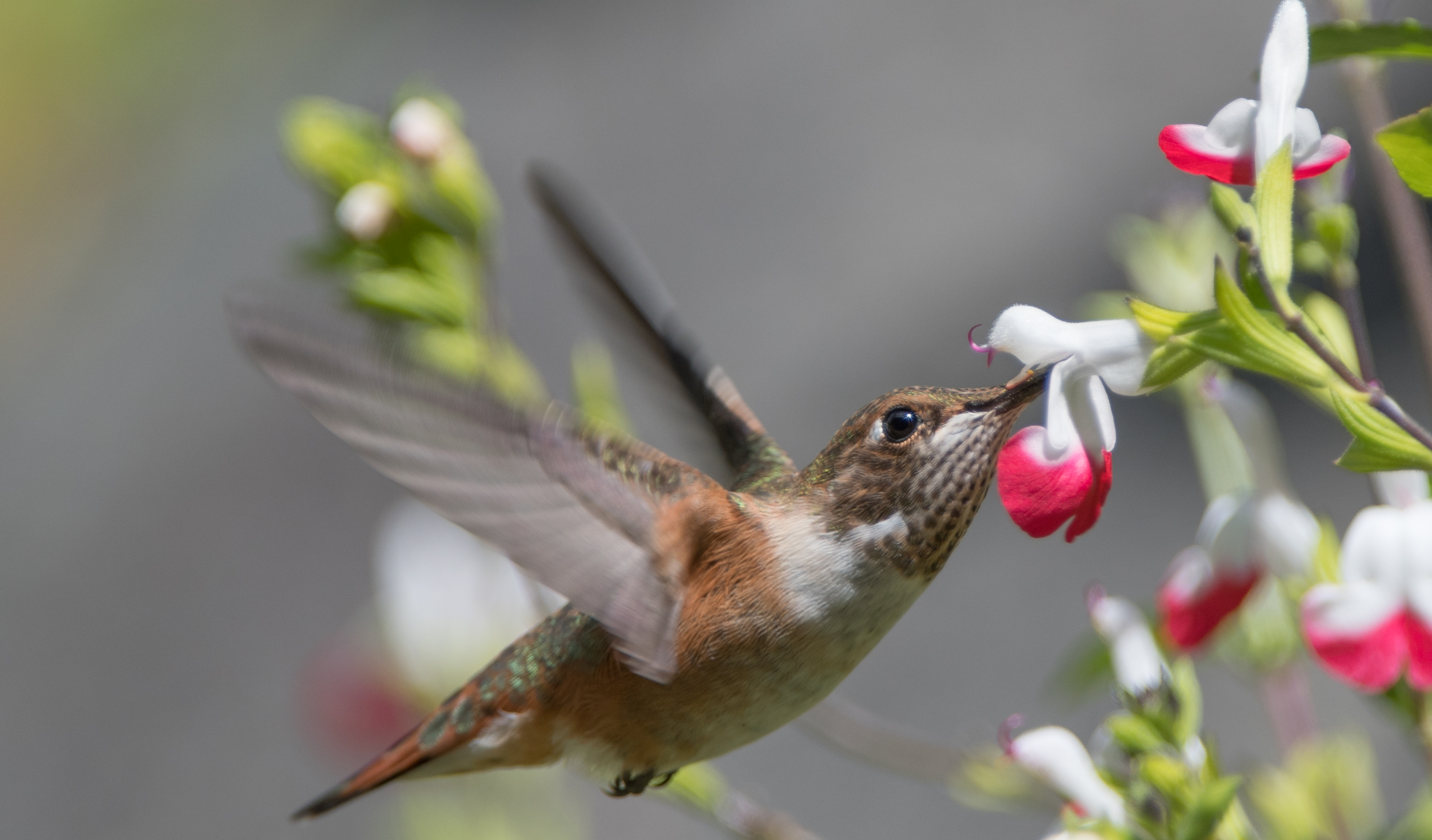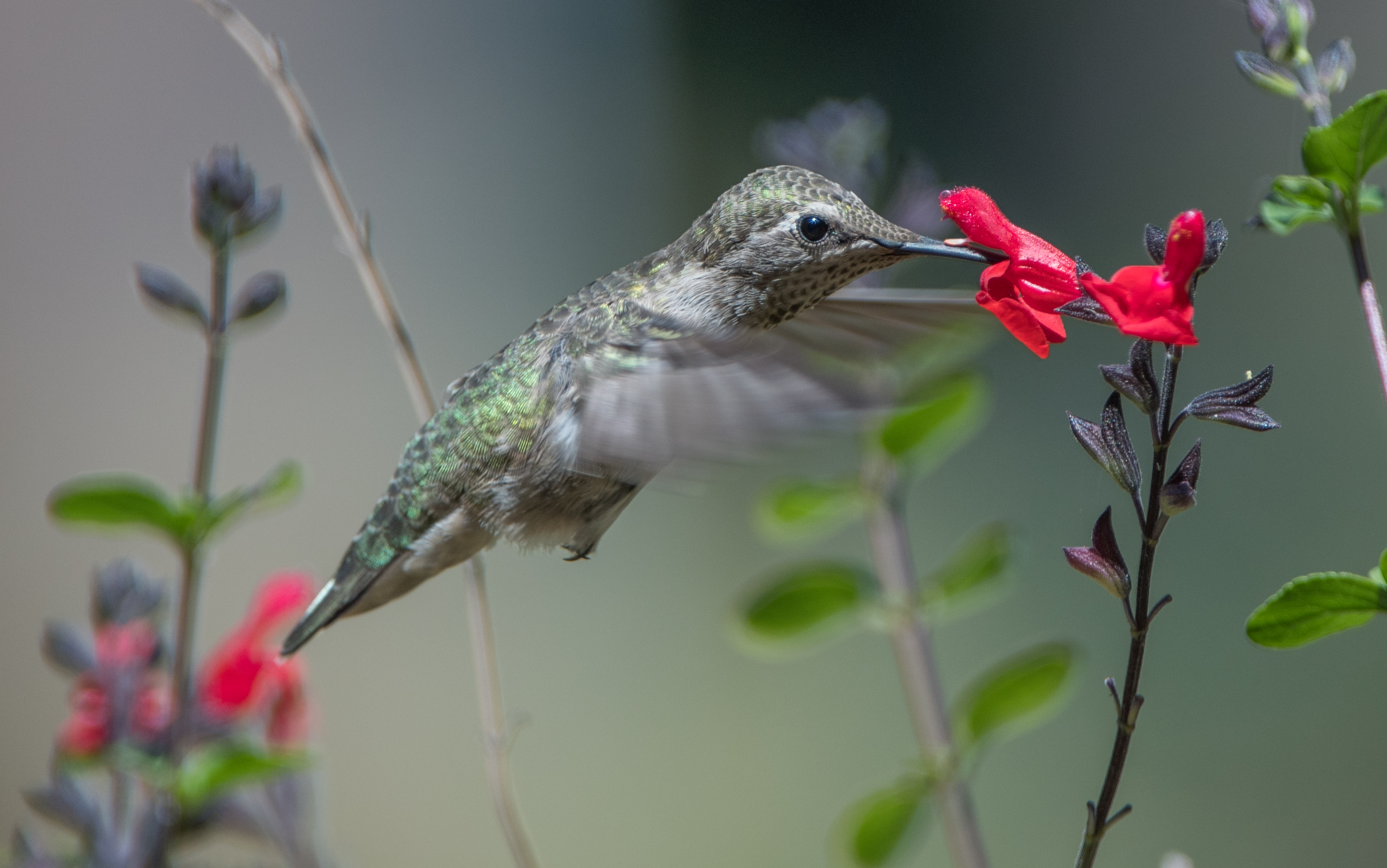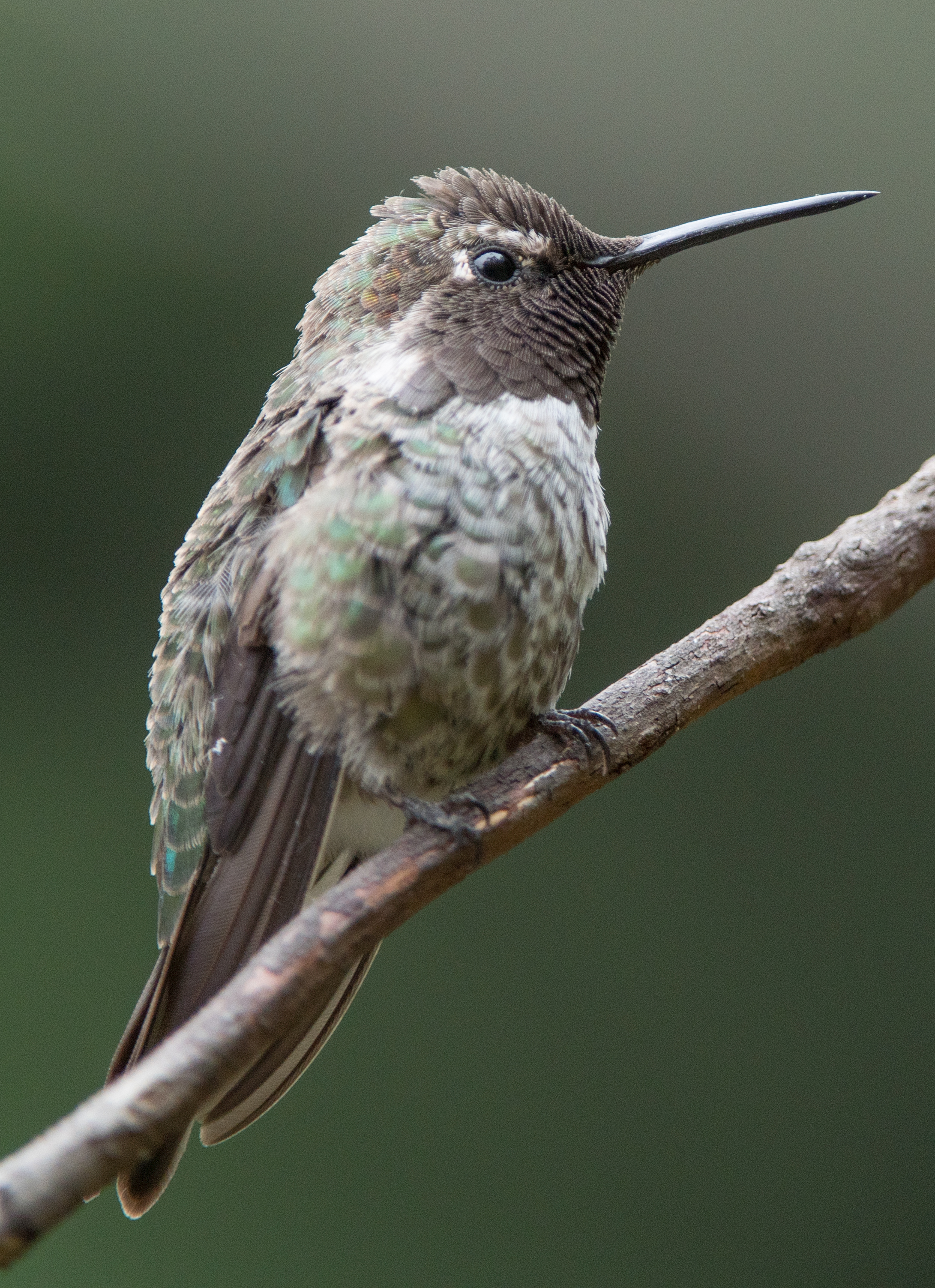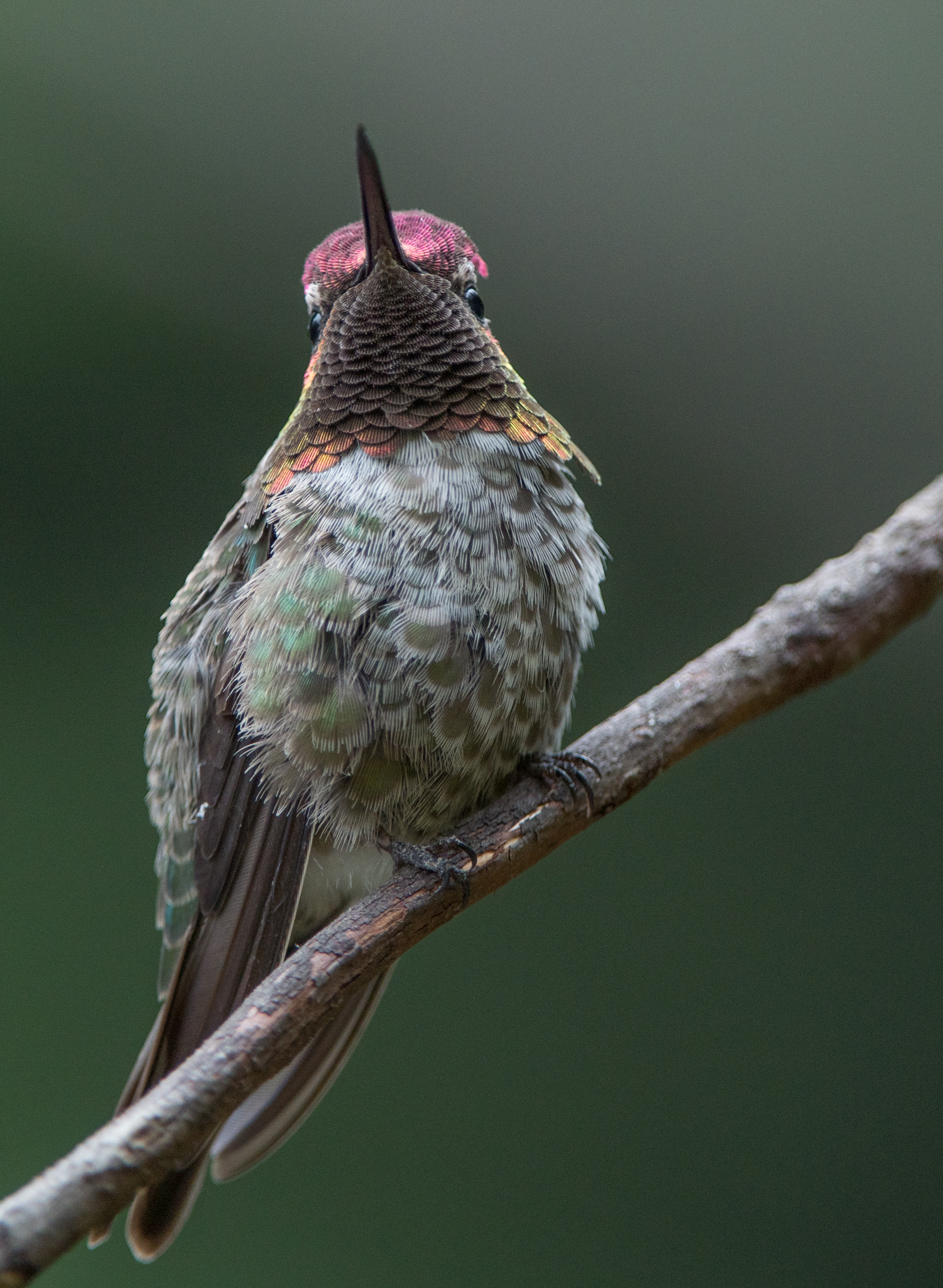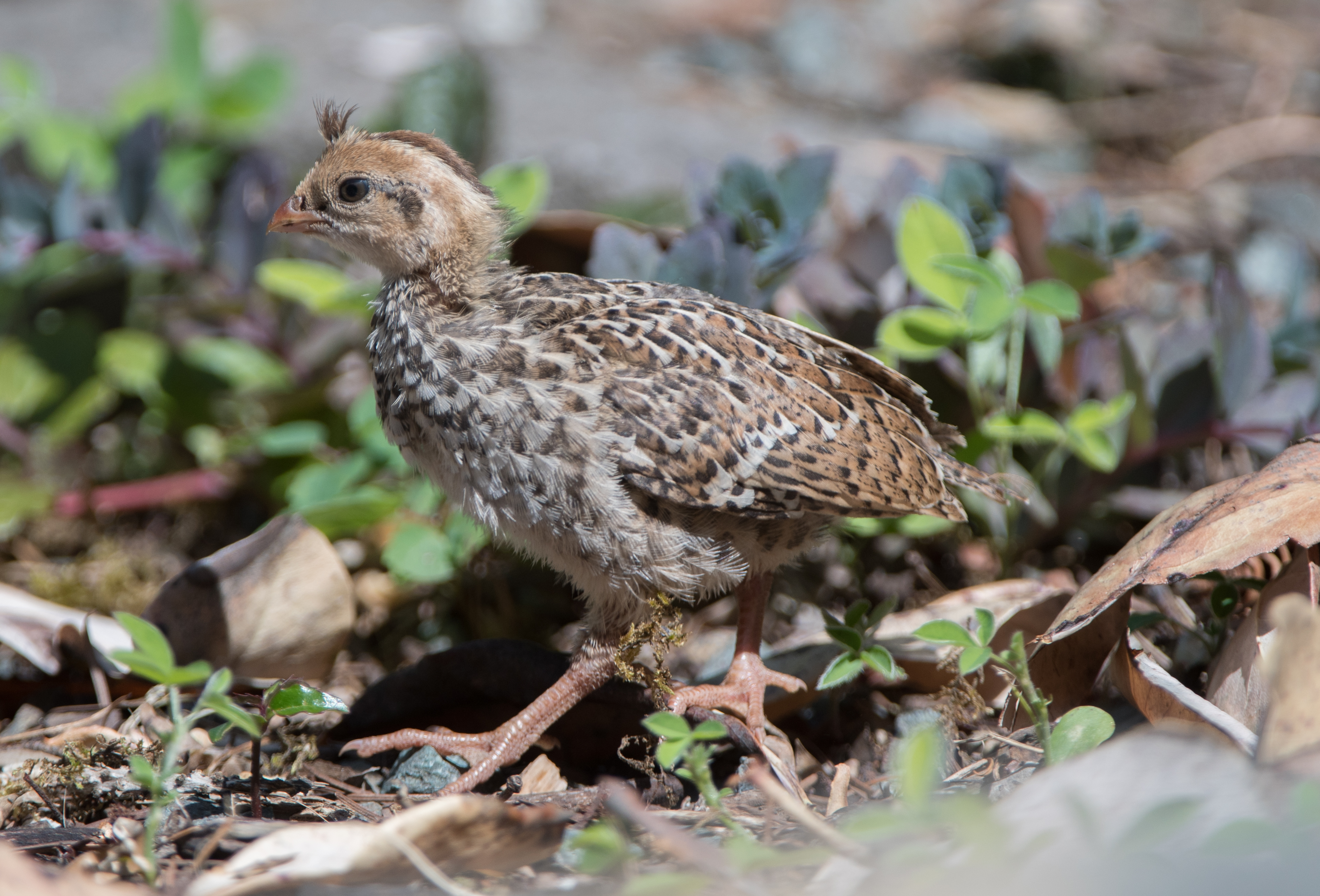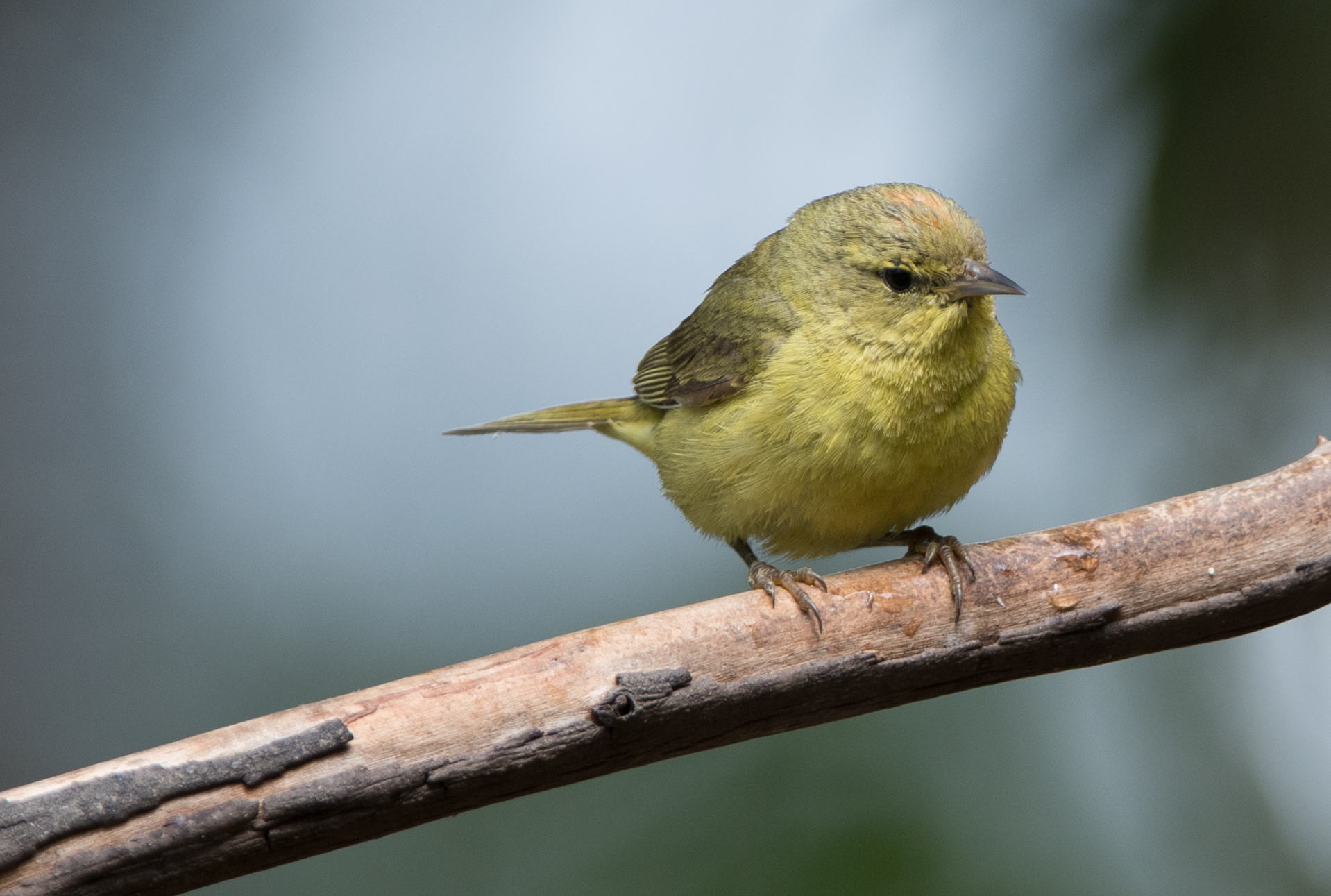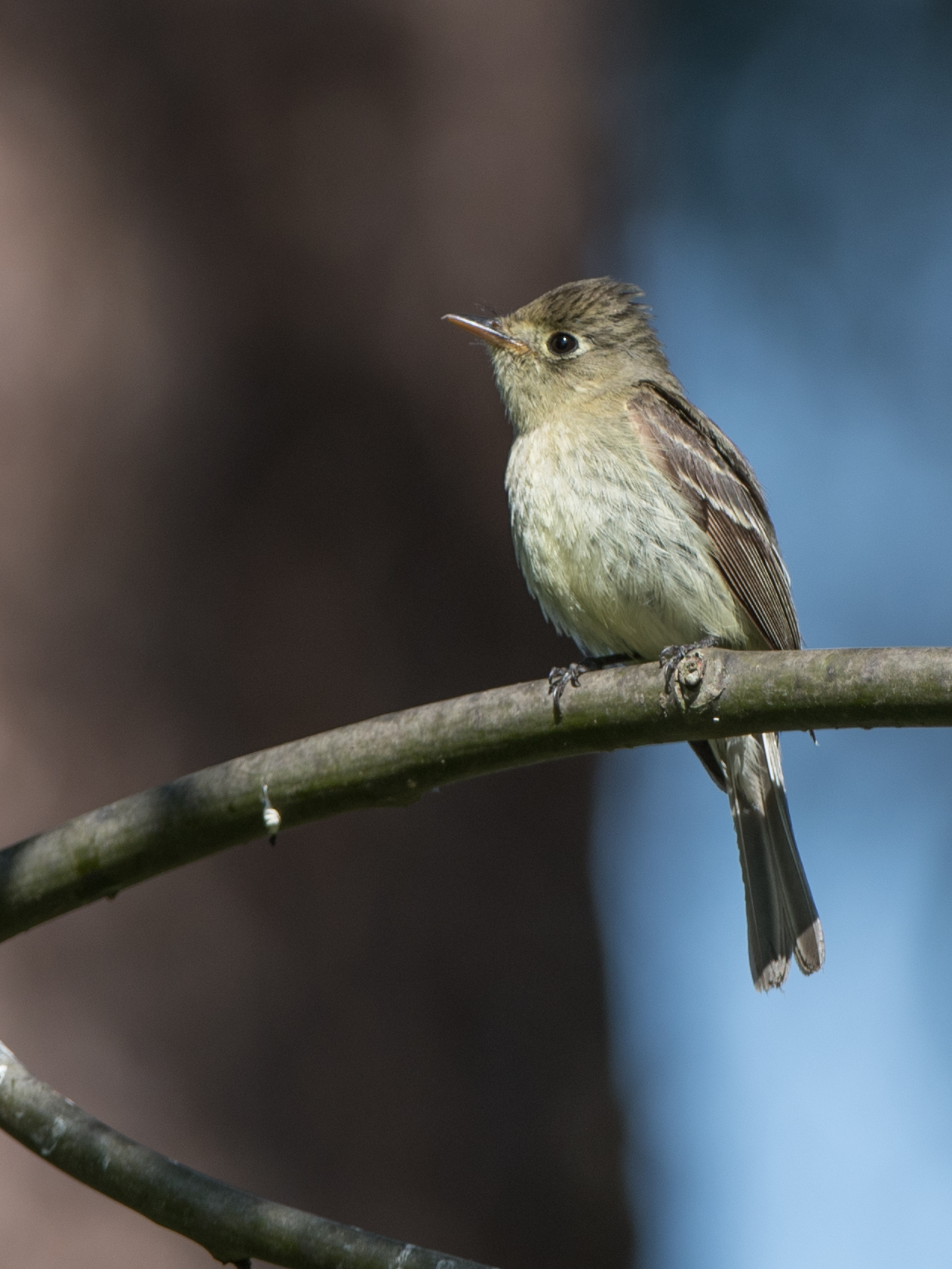I’ve spent a lot of time in the yard lately without many unusual birds to show for it. The yard continues fo generate some interest mainly due to all the juveniles present. It can be quite a chore to sort all of the “little brown birds” as to species. We have juvenile Spotted towhees, Dark-eyed juncos, White-crowned sparrows, House sparrows and other less confusing juveniles.
Our male Rufous hummingbirds have already left our yard for their migration south, but the females are still here. Here’s a photo of a female Rufous hummingbird feeding on salvia.
This is a photo of a female Anna’s hummingbird feeding on Salvia…
And here’s a male Anna’s hummingbird, some of which are year-round residents in the Pacific Northwest.
And here’s the same male Anna’s hummingbird with its gorget showing…
About a week ago I got a quick glimpse of a covey of juvenile California quail when I unexpectedly flushed them and they flew into the adjacent forest. Though small, these juvenile quail are quite flight-capable. The current status is that the covey contains eight juveniles, but the original group was probably larger and if half this remaining group survives to adulthood they will be lucky.
My most anticipated birds are the warblers, but I’ve been disappointed this spring and summer by their scarcity. However this past week I have had two visits from a beautiful male Yellow-rumped (Audubon’s) warbler (which I wasn’t able to photograph) and an Orange-crowned warbler which I was able to photograph and whose orange crown you can actually see. The orange crown is often difficult to observe.
The award for what will likely be my “bird of the month” will go to a bird that appeared on July 23, 2019. I was sitting in the yard with my camera at the ready when I became aware of a bird immediately next to me in a small Japanese maple tree. I looked over and realized that it was a flycatcher! The bird spent about ten minutes flying around the yard chasing goldfinches and chickadees OUT of the yard! Unfortunately it never took advantage of any of my conveniently located staging sticks, so I never obtained a really good photograph. Even more unfortunately, there is no hope of identifying the flycatcher other than belonging to the Empidonax genus, a group of flycatchers only reliably identifiable by their vocalizations.

